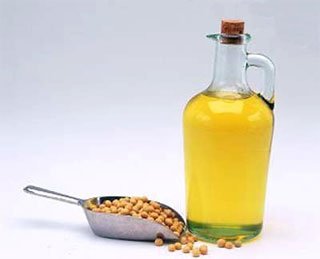- Choose professional Small Sunflower Seed Oil Refinery Line
- Professionally Designed Mini Oil Mill for Home Use
- Is Small Oil Production Line Worth for Investment?
- How to Build Small Edible Oil Production Line?
- Small Oil Mill Plant for Daily Requirement
- Small Edible Oil Refinery Plant Cost Can Be Reduced Relatively
- How to Extract Palm Oil from Palm Fruit-Oil Mill Plant
- start oil extraction factory
Soybean Oil Plant
Soybean oil plant is one of the most popular plants of the seed processing plant. The process for soybean oil plant typically consists of five steps: oilseed handling/elevator operations, preparation of soybeans for solvent extraction, solvent extraction and oil desolventizing, flake desolventizing, and oil refining.
Soybean Oil Plant

Soybean oil is one of the most common oils used in the production of margarine, for cooking oils, baking fat and frying fat. Soybean oil is a vegetable oil, made from soybeans, the seeds of the soy plant.
Soybean Oil Plant - Transportation of the Oil Seed
Soybeans received at the facility by truck or rail are sampled and analyzed for moisture content, foreign matter, and damaged seeds. Then the beans are weighed and conveyed to large concrete silosor metal tanks for storage prior to processing. When the facility is ready to process the soybeans, the beans are removed from the silo or tank and cleaned of foreign materials and loose hulls.Screens typically are used to remove foreign materials such as sticks, stems, pods, tramp metal, sand, and dirt. An aspiration system is used to remove loose hulls from the soybeans; these hulls may be combined later with hulls from the dehulling aspiration step. The beans are passed through dryers to reduce their moisture content to approximately 10 to 11 percent by weight and then are conveyed to process bins for temporary storage and tempering for 1 to 5 days in order to facilitate dehulling.
Soybean Oil Plant - Preparation of Soybean Seed
The process of soybean oil plant, which is fairly well standardized, consists of four principal operations: cracking, dehulling/hull removal, conditioning, and flaking.Soybeans are conveyed from the process bins to the mill by means of belts or mass flow conveyors;and bucket elevators. In the mill, the beans may be aspirated again, weighed, cleaned of tramp metal by magnets, and fed into corrugated cracking rolls. The cracking ; each bean into four to six particles, which are passed through aspirators to remove the hulls (processed separately after the removal of residual bean chips). These hulls may be combined with the hulls from the grain cleaning step;Next, the cracked beans and bean chips are conveyed to the conditioning area, where they are put either into a rotary steam tubed device or into a stacked cooker and are heated, make them pliable and keep them hydrated). Conditioning is necessary to permit the flaking of the chips and to prevent their being broken into smaller particles. Finally, the heated, cracked beans are conveyed and fed to smooth, cylindrical rolls that press the particles;into smooth;flakes;, which vary in thickness from approximately 0.25 to 0.51 millimeters (0.010 to 0.020 inches). Flaking allows the soybean oil cells to be exposed and the oil to be more easily extracted.
Soybean Oil Plant - Solvent Extraction and Oil Desolventizing
The extraction process consists of washing; the oil from the soybean flakes with hexane;solvent in a countercurrent extractor. Then the solvent is evaporated (i. e., desolventized) from both the solvent/oil mixture (micella) and the solvent-laden, defatted flakes (see Figure 9.11.1-3); The oil is desolventized by exposing the solvent/oil mixture to steam (contact and noncontact).Then the solvent is condensed, separated from the steam condensate, and reused.Residual hexane not condensed is removed with mineral oil scrubbers.The desolventized oil, called crude soybean oil, is stored for further processing or loadout.
Contact us now to get more info about the soybean oil plant, we are always ready to serve you!

 Français
Français Русский
Русский Español
Español